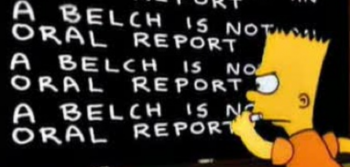Paranoia Screening Not Required for Secret Clearance
It seems like a simple question that the government should ask their employees who need to get a Secret or Top Secret clearance- “Do you think anyone is out to “get” you?”
One government contractor on travel in Canada was so paranoid that when he saw a Canadian Commemorative Quarter with a red poppy stamped into its obverse, he became convinced that the Canucks were trying to spy on him using a secret transmitter embedded in the quarter.

He even put the quarter under a microscope and discovered an unusual “mesh” material that could only be sophisticated nano-technology that made the coin work without a powersource! He threw the coin away and was later alarmed when someone stuck two more transmitter coins into his outside suit jacket! He knew those coins weren’t his because he kept his coins tightly wrapped in plastic in an inside jacket pocket.
Uncle Sam’s DoD intel service had to be warned that the Canadians had advanced spy technology embedded in their coins, so he wrote a memo which led to an embarrassing official notice by the DoD warning about coins being used as GPS locators and transmitters.
From NBC4 here:
An odd-looking Canadian coin with a bright red flower was the culprit behind the U.S. Defense Department’s false espionage warning earlier this year.
The odd-looking — but harmless — “poppy coin” was so unfamiliar to suspicious U.S. Army contractors traveling in Canada that they filed confidential espionage accounts about them. The worried contractors described the coins as “anomalous” and “filled with something man-made that looked like nano-technology.”
The silver-colored 25-cent piece features the red image of a poppy — Canada’s flower of remembrance – inlaid over a maple leaf. The unorthodox quarter is identical to the coins pictured and described as suspicious in the contractors’ accounts.
“It did not appear to be electronic (analog) in nature or have a power source,” wrote one U.S. contractor, who discovered the coin in the cup holder of a rental car. “Under high power microscope, it appeared to be complex consisting of several layers of clear, but different material, with a wire like mesh suspended on top.”
The supposed nano-technology actually was a conventional protective coating the Royal Canadian Mint applied to prevent the poppy’s red color from rubbing off.
The confidential accounts led to a sensational warning from the Defense Security Service, an agency of the Defense Department, that mysterious coins with radio frequency transmitters were found planted on U.S. contractors with classified security clearances on at least three separate occasions between October 2005 and January 2006 as the contractors traveled through Canada.
One contractor believed someone had placed two of the quarters in an outer coat pocket after the contractor had emptied the pocket hours earlier. “Coat pockets were empty that morning and I was keeping all of my coins in a plastic bag in my inner coat pocket,” the contractor wrote.
Intelligence and technology experts were flabbergasted over the warning when it was first publicized earlier this year. The warning suggested that such transmitters could be used surreptitiously to track the movements of people carrying the coins.
“I thought the whole thing was preposterous, to think you could tag an individual with a coin and think they wouldn’t give it away or spend it,” said H. Keith Melton, a leading intelligence historian.
This reminds me of a memo I once saw saying how cans of Coca-Cola should be banned from all classified spaces on military and intelligence installations because some cans had cellphones and GPS trackers in it as part of a game promotion.
